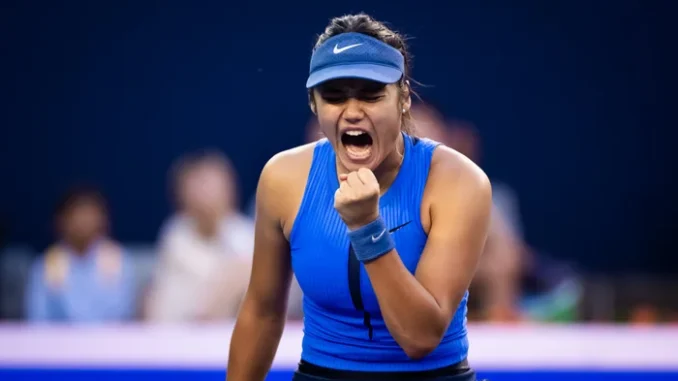
In the unforgiving arena of professional tennis—where the grind of globetrotting tournaments tests the limits of human endurance, and a single injury can derail dreams—British star Jack Draper has emerged as a vocal crusader for change. The 23-year-old, currently nursing his own injury woes, has issued a passionate plea for tennis authorities to overhaul the sport’s grueling calendar, warning that the relentless schedule is not just burning out players but threatening to shorten careers across the board. Draper’s call comes amid a wave of high-profile setbacks, including Emma Raducanu’s abrupt season shutdown and Novak Djokovic’s mid-match retirement, spotlighting a crisis that’s rippling through both the men’s and women’s tours.
Draper, who has battled his share of physical hurdles since bursting onto the scene, didn’t mince words in his social media rallying cry. “Injuries are going to happen. We are pushing our bodies to do things they aren’t supposed to in elite sport,” he wrote, acknowledging the inherent risks of competing at the pinnacle. Yet, he emphasized the excitement of the new generation: “We have so many incredible younger guys on the tour right now and I’m proud to be a part of that.” But without reform, he argued, longevity is at stake. “However, the tour and the calendar have to adapt if any of us are going to achieve some sort of longevity.” His message resonates deeply in a sport where the season stretches from January’s Australian Open heat to November’s year-end finals, leaving players with a scant few weeks off before pre-season training kicks in. The constant travel, shifting surfaces, and high-stakes matches create a perfect storm for breakdowns, and Draper insists it’s time for the ATP and WTA to evolve beyond superficial tweaks.
The urgency of Draper’s demands is amplified by recent incidents that have shaken the tennis world. Take Emma Raducanu, the 22-year-old British sensation whose 2021 US Open fairy tale captured hearts globally. After a promising 2025 resurgence—marked by a career-high 50 matches, 28 wins, and a climb to world No. 29—she was forced to pull the plug on her season early. Fresh off a challenging Asian swing plagued by illness and injury, Raducanu withdrew from the Pan Pacific Open in Tokyo and the Hong Kong Open, prioritizing rehabilitation over risking further damage. Her body, battered by humidity-induced dizziness, spiking blood pressure, and back spasms during events in Wuhan and Ningbo, simply couldn’t hold up. “It’s been tough, but I need to prioritize recovery,” she shared, her resolve shining through despite the disappointment. This isn’t an isolated case; Raducanu’s story echoes the broader toll on women’s tennis, where players like Naomi Osaka, Daria Kasatkina, Elina Svitolina, and Paula Badosa have also grappled with burnout and physical fragility this year.
On the men’s side, even the indomitable Novak Djokovic, at 38 still a force of nature with 24 Grand Slam titles under his belt, isn’t immune. The Serbian legend was compelled to retire from his third-place play-off against Taylor Fritz at the Six Kings Slam, a stark reminder that age and experience offer no shield against the calendar’s demands. Djokovic’s withdrawal, coupled with young Dane Holger Rune’s heartbreaking exit from the Nordic Open due to a severe Achilles tendon injury at just 22, paints a grim picture of a sport in need of intervention. Rune’s tearful statement post-withdrawal highlighted the emotional strain: “It’s been a tough few weeks, and I pushed too hard.” These episodes aren’t anomalies; they’re symptoms of a system where slower court conditions, heavier balls, and extended rallies amplify the weekly grind, making every point a battle for survival.
Draper’s plea hasn’t fallen on deaf ears. World No. 4 Taylor Fritz, fresh from his own encounters with the tour’s rigors, echoed the sentiment emphatically. “Facts. Also seeing more injuries and burnout now than ever before,” Fritz responded. “Because balls, courts, and conditions have slowed down a lot, making the weekly grind even more physically demanding and tough on the body.” This consensus among top players underscores a growing movement for reform. Discussions have swirled around potential solutions: shortening the season, incorporating mandatory rest periods, or adjusting tournament formats to allow more recovery time. Former greats and analysts alike have weighed in, noting that while tennis’s global appeal thrives on its non-stop action, player welfare must take precedence to sustain the sport’s stars.
At its core, Draper’s demand is about preserving the magic of tennis for future generations. The influx of young talents—like Draper himself, Rune, and emerging forces on the WTA—brings fresh energy and rivalries that could rival the Big Three era. But without adaptation, that promise risks fizzling out prematurely. As Draper recuperates and plots his return, his words serve as a wake-up call: tennis isn’t just about grand slams and glory; it’s about ensuring athletes can endure the marathon without breaking. With authorities under pressure to act, the coming months could mark a turning point. Will the powers that be listen? For the sake of icons like Djokovic and rising stars like Raducanu, the sport’s future hangs in the balance. In a game defined by resilience, it’s time for the system itself to show some.
Leave a Reply